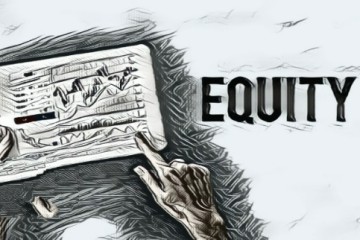Grade 8 Lesson 1: Types of #investments - #equities
Investing is an action you take with your money to make it grow. There are many things you could invest your money in. Some of the most popular ones are #Stocks, #MutualFunds, #FixedDeposits or #Term #Deposits, #Bonds, #RealEstate, #Crypto, #Insurance, etc. In this lesson, we will look at one such #investment type (or #assetclass) – equities.
A stock is a #share in the ownership of a company. Buying shares or stocks means you’re investing money in a #company (“shares”, “stocks” and “equities” essentially mean the same thing). When a company “goes public,” it means that it’s willing to sell stocks to investors, usually to raise #capital for the company to grow. As a stockholder or shareholder, you’re a part-owner of a company. By owning a certain amount of #equity in the #corporation you’ve invested in, you’re now entitled to certain privileges.
You can be entitled to a portion of the company’s profits, called #dividends. Plus, there’s the concept of #capital #appreciation: the difference between the price you purchased the stock at and its current price if it’s gone up. If the #price goes up, your stock is worth more. If you decide to sell at this point, you can make a profit from that sale.
Many factors affect the price of a company’s equity. If a company is successful, the price of its stock usually will go up. The health of the economy, laws passed by the government, and wars also can cause share prices to rise or fall. Shares can be bought or sold in a “stock market” – we have covered this topic in detail in our last grade 7 lesson.
Once stocks become available on the market, they can be bought and sold by investors. If a lot of investors are looking to buy a particular stock, this increased #demand can push the price higher. On the opposite end of the scale, if a lot of investors are trying to sell a particular stock, the price can drop. High demand means higher stock prices, while low demand means lower stock prices.
The primary reason most people invest in stocks is the potential return compared to alternatives such as bank certificates of deposit, #gold, and #Treasury bonds. For example in the US, the average stock market return has been about 10% annually since 1926; long-term government bonds have returned 5% to 6% annually during the same period.
The stock market has created an enormous amount of wealth over the years. On average, the S&P 500 (a US stock market index), which includes 500 of the largest U.S. publicly traded companies, has returned 8% to 12% annually. Only $10,000 invested in the stock market 50 years ago would have grown to more than $380,000 today.
Note that the stock market doesn't go up every year. The S&P 500 typically falls three out of every 10 years. Some drops can feel quite brutal, and their level of volatility is not for everyone. But if you can manage your fear, stocks have the potential of earning significantly higher returns than other investment options over the long term.

ayu ecosystem #kids #education #financialliteracy #finance